In the game of badminton, a serve plays a very crucial role. A player needs to learn how to serve and how to use different variations of serves. One must be versatile and proficient with different types of serves. A good service is your weapon during a game.
You might be wondering what do I mean by varying the service. Service Variation means to serve the opponent in different ways and not just feed one type of service. The reason lies in the fact that if you serve in the same manner repeatedly, the opponent will know exactly where to stand and will return the service in a better way.
A weak serve gives the opponent a chance to execute an attacking shot, which is a loss to your side. Therefore, you should be careful with your service to not lose a point at the time of your service. Each type of badminton serve needs different skills. Therefore, to be executed properly, you must plan to devote a lot of time to practice.
There are mainly four types of serves in badminton: High Serve, Low Serve, Flick Serve, and Drive Serve. Each player must master these types to make their gameplay more diverse and to keep confusing the opponent.
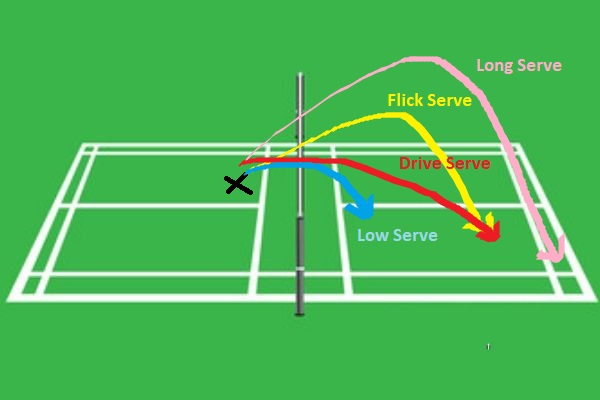
Let’s dive right in and learn each serve in detail.
1. High Serve
This type of service is executed when you want the shuttle to land at the back end of the opponent’s court. The server will stand in his/her position and serve the shuttle diagonally in a high and long manner so that it reaches the back end of the opponent’s court. This service is generally used in the singles format of the game (mostly in women’s singles).
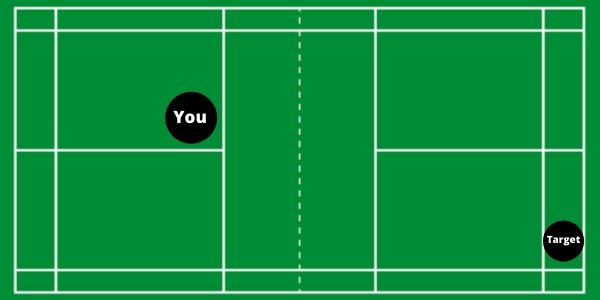
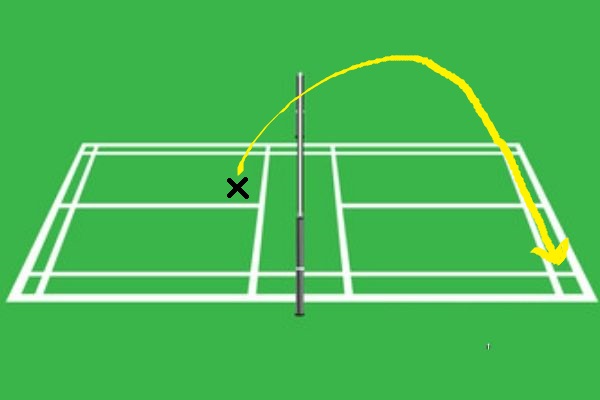
A high serve will prevent your opponent from executing a smash unless he/she can do a jump smash. A clear shot or a drop is more expected from your opponent.
A tip for you is to try aiming the shuttle at the opponent’s backhand area. This will force your opponent to use their backhand. You might be wondering why is it an advantage? The answer is that most badminton players have weaker backhands than forehands.
Let me help you learn how to do a high serve:
- Hold the shuttlecock with its head facing downwards.
- Stand sideways while you serve which means that the side of your body must face the net.
- While servicing, let go of the shuttle and swing your racquet arm upwards. Twist your body to an extent that the body faces the net.
- Move your wrist to a direction where you want the shuttle to land (usually upwards).
- While doing this, you back leg must lift up naturally with your toes touching the ground.
It is very useful to use this serve against opponents who cannot hit strong smashes from the rear end of the court. Use a low serve if your opponent is good at smashes (mostly tall players).
You must refrain from using the high serve in doubles as it is considered a foul if the service enters the baseline. Instead, use a low serve in doubles.
If you want to learn how to do the perfect high serve in badminton in much more detail, click here to find the complete guide.
2. Low Serve
A low serve gives you the flexibility of using either backhand or forehand. Use the style that you are comfortable with and display your strength. Below is the description of the forehand and backhand serve.
When you watch men’s singles, men’s and women’s doubles games, you will observe that in most of the matches, low serves are used as it refrains from giving a chance to smash to the opponent.


Forehand Low Serve
A low service is used when you want to deliver the shuttle near the service line of your opponent. A good low serve will have the shuttlecock moving just above the net. If not, the opponent will have a chance to move forward and smash the shuttle down to you. You can aim the shuttle at the forehead or backhand of the opponent.
A low serve requires a lot of practice. You can start by practicing the service right in front of your opponent.
Here’s how to do it:
- Stand 2-3 feet behind the service line.
- Hold the shuttle by the feathers properly using all your fingers gently. It must face downwards.
- It is important for the distance of both arms including the arm holding the racquet to be similar.
- As you let go of the shuttle, move your racquet lightly while pushing your thumb forward to the direction you want the shuttle to land.
- The power mainly comes from the push of the thumb and the slight movement of the wrist.
Backhand Low Serve
In the backhand low serve, the backhand grip is used and you must be very careful with the tightness of the grip and how much force to put in the swing. It requires immense practice and can be served to the T, backhand, or forehand of the receiver. However, beware of breaking the service rules. The rule is that the shuttle must be 1.15 meters from the surface of the court at the instance of serve.
Push the shuttle with the racquet face and try to make the shuttle skim through the tape of the net.
If you want to learn how to do the perfect low serve in badminton in detail, check out this article.
3. Flick Serve
The flick serve is a deceptive serve that is also played in an upward direction but the altitude is smaller than a high serve. Generally, it is played with the backhand as the backhand has less power than the forehand. This will not allow the shuttle to move to a higher altitude.
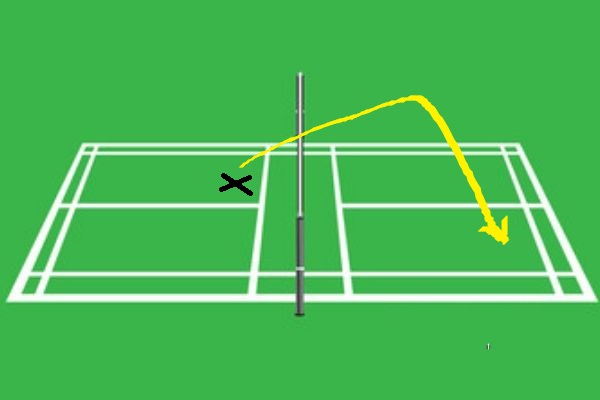
This service can be used to trick or confuse your opponent. In pressure situations, you can use this serve.
A question comes up in the mind that how will it confuse the opponent?
Well, the answer is that when you stand in a low serve position, the opponent will think that you will deliver a low serve and will stand closer to the net. However, when you push your thumb and wrist harder, the shuttlecock flies high and heads towards the back of the court.
However, you must use this serve sparingly otherwise it can be anticipated by your opponent.
You can use this service in singles and doubles but it is more commonly used in doubles. Notably, the flick serve primarily depends on wrist action.
4. Drive Serve
You can use this service to add variation to your game. It is used in both, singles and doubles and is considered an attacking serve. In this, the shuttle will travel at a flatter angle towards the opponent at a high pace.
It will win you a point or force a loose return if the opponent is unprepared for it.
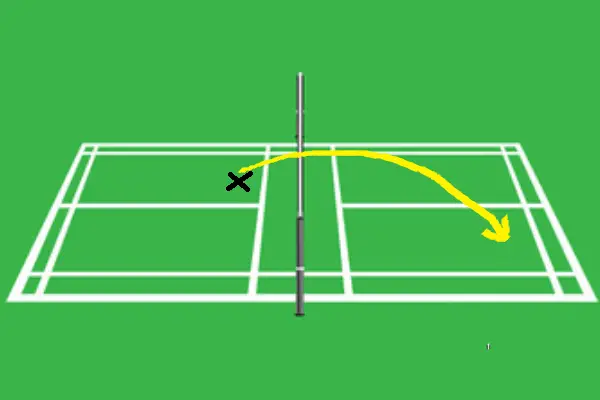
Here’s how you should do it:
- Play with an underarm forehand action
- Stand in a comfortable position and place your racquet a bit below your waist.
- Swing the racquet, hitting the shuttle at a flatter angle.
- Make sure that you contact the racquet below your waist so as to not make a service fault.
In some instances, your opponent can return your serve and it can come back to you very quickly. Therefore, you must always be careful and on your toes.
Final Thoughts
All these badminton serves have their own purpose in different situations. Use them according to the opponent as well. Try to master them and use them when required. If you want to master it, keep practicing until you don’t make mistakes.
You’ll learn how to use these serves effectively only if you do the practice. Do practice these shots and make it perfect. Sometimes, you might need to play the mind game, and it requires patience and practice to execute what you think in your mind.
It’s always good to have different options in your arsenal. You can use these different types of serves in different situations to confuse your opponent. So, go and practice and improve your game awareness to win every single rally.
Now, if you want to learn how to return these different types of serves, if you’re the receiver, then check out this article.
I hope this article was helpful. If so, do share it so that it will reach other badminton enthusiasts as well.
